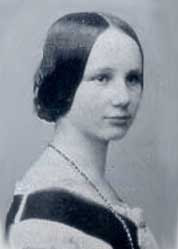Charles Babbage (1791-1871)
Charles Babbage, a British Mathematics professor, is regarded as the Father of Computers. He was born in England in 1792 as the son of a rich banker from Devon. He was inspired by Napier's logarithm tables and Napier's logs and bones. He began to design a "difference engine" in 1821 which was a very large and complicated machine intended for doing logarithmic calculations automatically.
The device was based on the principle that the difference between certain values of the expression at a certain stage becomes constant. But it was difficult to make the machine parts accurate enough to prevent errors to occur, using the technology available at that time.
The Analytical Machine known as first computer
Encouraged by the work of "difference engine", he began design of another machine "the analytical machine", which could carry out many different types of calculations. Analytical engine used the concepts of Automatic Loom and Difference Engine.
The Analytical Machine known as first computer
The Analytical machine had five units- input, output, store, mill, and control. Store was used for storing numbers and Mill was used to do the calculations by rotation of gears and wheels. Control unit did the job of supervision of all other units. Note that these five units are similar to the functional units of a modern digital computer.No wonder he was called the "Father of Computers"!
The close view of Analytical Machine
Working with him was a mathematician Lady Ada Lovelace, who provided the input material in the form of programs. Thus, Lady Ada Lovelace became known to the world as the first computer programmer. She coded these programs on punch cards. Her contribution was so valuable that a language called "Ada" was named after her.
"The daughter of poet Lord Byron, Ada Lovelace was a gifted mathematician and scientist who worked with Charles Babbage, the computer scientist who had the idea of a programmable computer. On 10 December 1980 (Ada's birthday), the US Defense Department approved the reference manual for its new computer programming language, called Ada. Her image can be seen on the Microsoft product authenticity hologram stickers."
The two concepts implemented in this machine, which revolutionised the Computer era in the following years are as follows:
* The machine was able to compare quantities and then decide which of the sequences to follow.
* The results of a calculation could alter the numbers and instructions already stored in the machine.
The close view of Analytical Machine
Babbage devoted his last 37 years for the development of the analytical engine. His machine was too ahead of the time of development. Lack of better technology leaded to incomplete work of Babbage that time and he passed away in 1871 before he had completed his work.
The close view of Analytical Machine
This was the first fully-automatic calculating machine. British computing pioneer Charles Babbage (1791-1871) first conceived the idea of an advanced calculating machine to calculate and print mathematical tables in 1812. This machine, conceived by Babbage in 1834, was designed to evaluate any mathematical formula and to have even higher powers of analysis than his original Difference Engine of the 1820s. Only part of the machine was completed before Babbage's death in 1871. This portion of the mill was under construction at the time of his death. Babbage was also a reformer, mathematician, philosopher, inventor and political economist. He is considered to be the 'father' of computing for his invention.









Thanks
ReplyDelete